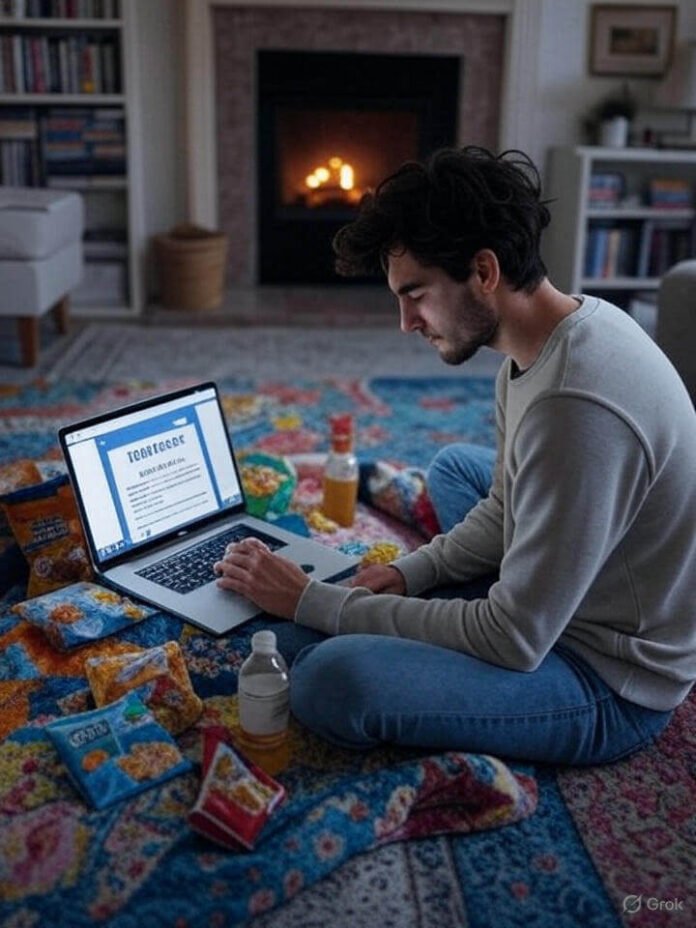So, picture this: I’m sitting on my bathroom floor at midnight, stress-eating a granola bar I found in the back of the cabinet, and Googling “importance of mental health treatment” like my phone is gonna magically solve my problems.
The granola bar? Stale. The search results? Overwhelming. And my dog is looking at me like, “Wow, you’re not okay, huh?”
I think that was the night I realized—mental health treatment isn’t just this abstract thing other people do. It’s like seat belts. You don’t think about it until you’re suddenly flying through life’s metaphorical windshield. And yeah, I needed a seat belt.
1. My First Attempt at “Getting Help”
The first time I tried therapy, I treated it like ordering takeout.
- I opened my laptop.
- I scrolled through a bunch of therapist profiles.
- I picked one with a friendly smile and thought, “Yep, she looks like someone I can cry in front of.”
…And then I didn’t call her for three weeks because dialing the number felt like climbing Mount Everest in flip-flops.
When I finally went, I spent the first session word-vomiting about work stress, my sleep schedule, and the fact that I keep buying houseplants and killing them. She just nodded. I left thinking, Huh. That’s it?
Spoiler: That wasn’t it. Real mental health treatment takes time. It’s messy. It’s like peeling an onion—you cry a lot, and sometimes you wonder why you even started. But man, when you start seeing the little shifts? Totally worth it.
2. Why Mental Health Treatment Actually Matters
Here’s the thing—I used to think therapy was for “other people.” Like, movie characters who have dramatic breakthroughs or people on talk shows. But the importance of mental health treatment smacked me in the face when my usual coping mechanism (bingeing The Office for the 37th time) stopped working.
Without real support, I was:
- Snapping at people for no reason (sorry, Karen at Starbucks).
- Forgetting basic stuff like paying bills on time.
- Feeling like even simple things—like taking out the trash—were Olympic-level challenges.
And the wild part? Getting help didn’t just make me “less sad.” It made my whole life run smoother. Like suddenly, I had more emotional RAM to handle things.
Mental health treatment isn’t just about fixing a “problem.” It’s about giving your brain tools so life doesn’t always feel like running a marathon in mud.
3. What Actually Works? (And What Didn’t for Me)

Oh boy, this is where it gets real. Everyone’s mental health journey is different, but here’s my personal scorecard after trying multiple things:
✅ Talk Therapy (Winner)
Classic. You sit, you talk, sometimes you ugly-cry. It works if you stick with it and find the right person. My third therapist was the charm. (The first one had a weird obsession with dream interpretation, and the second one called me “sweetie” in a way that made me feel 12.)
✅ Journaling (Surprisingly Not Lame)
I used to roll my eyes at this. But writing down my brain static helped me stop ruminating. Also, hilarious to look back and see I was once mad at a UPS driver for “vibe reasons.”
⚠️ Meditation Apps (Meh… But for Some, Magic)
I tried. I really did. But I kept thinking about laundry. If you can stick with it, they’re awesome. I’m more of a “meditate accidentally while staring at clouds” person.
✅ Group Therapy (Unexpectedly Amazing)
I joined a small anxiety group at a local clinic. Thought it’d be awkward. It was… at first. But then we started laughing about our shared 3 AM overthinking habits, and suddenly I didn’t feel so broken.
❌ Self-Help Book Binge (Short-Lived)
I bought like six books. Felt accomplished. Read half of one. They’re great if you actually do the exercises… which I did not.
4. Mixing and Matching: The Combo That Saved Me
The best mental health treatment for me wasn’t just one thing. It was like making a playlist:
- Weekly talk therapy
- Journaling a few nights a week
- Texting my “accountability friend” when I started spiraling
Once I stopped treating treatment like a one-time oil change and more like ongoing maintenance, everything clicked. Mental health isn’t a checkbox. It’s a routine.
5. The Stuff Nobody Tells You About Getting Better
- You might feel worse at first. Digging into emotions is like cleaning your closet—chaos before clarity.
- Progress is sneaky. You don’t wake up “fixed.” You notice, like, “Hey, I didn’t cry in traffic this week!”
- Finding what works is trial and error. And that’s okay.
The importance of mental health treatment isn’t about perfection—it’s about having a life raft. Some days, you’re just holding on. Other days, you’re paddling forward.
6. If You’re Hesitating, Here’s Your Nudge

I wasted months telling myself I “wasn’t bad enough” to need help. Spoiler: there’s no badge for waiting until you’re in total meltdown mode.
If you’re reading this and thinking, Maybe I should try… Yeah. You should. Call the clinic. Text the hotline. Download the app. Whatever step feels possible—take it.
Future you will high-five current you for doing it.
Final Rambly Thoughts
Mental health treatment isn’t about being “broken.” It’s about learning how to carry the weight without it crushing you. And honestly? It’s kinda like learning to drive in the rain. Scary at first. But once you have the skills, life feels less like hydroplaning.
So yeah—get the help. Stick with it. And if all else fails, remember: even small steps count. Like calling that therapist while holding a stale granola bar at midnight. Been there.
Outbound Links:
- BetterHelp Blog – for relatable therapy and mental health insights.
- Mental Health America – for free tools, screenings, and resources.
































